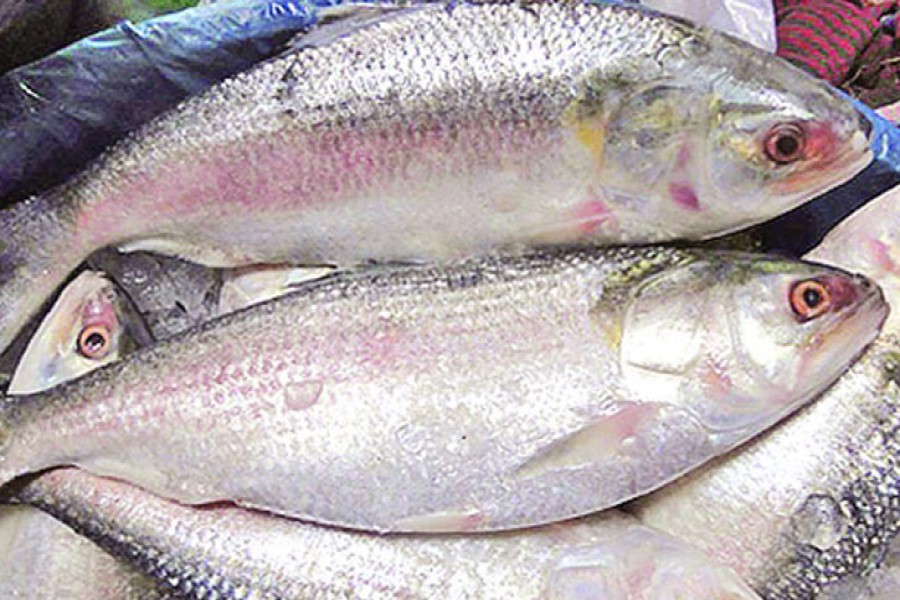Since the ban on catching hilsa was enforced over one and a half decades ago, this year has perhaps witnessed the highest yield of the delicious fish. The statistics, however, are subject to verification by the relevant department. But the picture was hearty. Big and small neighbourhood kitchen markets throughout the season have witnessed large supplies of the fish, with their prices remaining within the buying range of the majority people. Apart from the picture in Dhaka, the whole country presented similar spectacles. The volume of hilsa catch this year was so satisfactory that the government had decided to export the fish to India as a Durga Pooja gift for the Bengalees in that country. A quantity of 1,475 tonnes of the national fish of Bangladesh is being exported as a 'goodwill gesture' towards India. The fish is regarded as a great delicacy in India's Bengalee-dominant state as well.
A 22-day ban was slapped on October 14 to be withdrawn on November 4. The period is a vital phase for hilsa breeding. Like in the past, preparations have been taken also this year in delicate places considered critical to spawning by the mother hilsas. The places cover a total of 152 upazilas in 36 districts. The government has strictly banned netting, sales and transportation of hilsa and hilsa fishlings in the area. In order to enforce the government prohibition, the fisheries-department monitors, river police and coast guard personnel have been engaged in keeping watch on the ban-flouters. They will be equipped with high-tech surveillance technology. In the initial days of the ban, catching hilsa fry stealthily by a section of fishermen used to be a common incident. Few of these errant fishermen could be nabbed thanks to a lack of sufficient numbers of law enforcers.
In the years that followed, the ban had continued to become harsher. Apart from increase in the number of ban enforcers and widening of the area under their jurisdiction, the ban period was extended to 22 days from 11 days. As the policy-makers had expected, after overcoming small and big hurdles the project began bearing fruits. However, the government's dithering in keeping its promise of providing food assistance to the idle fishermen for the period of ban led to considerable resentments among the hilsa-fishing community. Even different media outlets came up with reports of hilsa fishers going hungry at places. The irregularities in this regard kept reducing in the following years.
At the press conference that announced the ban order for the current year, journalists were told the government would provide foods to the fishermen and other people concerned, who would be barred from fishing hilsa. The Fisheries and Livestock Minister was expressly upbeat as he credited this year's hilsa bonanza to the government's initiatives including the 22-day ban enforcement. Riding on the steadily increasing fish harvests, the government might restart mulling hilsa export in full swing. But the government is learnt to have kept such an idea aside for now. The country will go for the protein-rich fish's exports once it feels its hilsa production has reached a surplus point after meeting the domestic demand. The export potential of hilsa is beyond all conjectures. Given the present ban remaining in place stringently for a few more years, achieving the goal of hilsa exportability by the country is set to become a reality.


